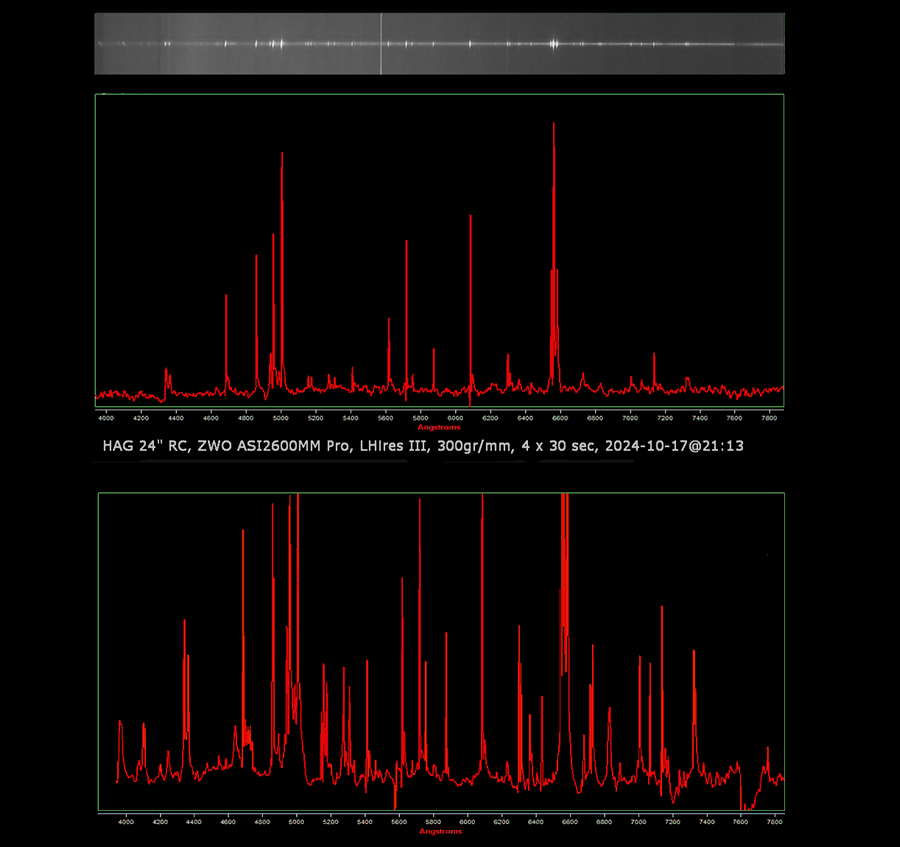Spectra of Planetary Nebulae
| Nebula | PK053-03.2 | RA (J2000) | 19 41 57.0 |
| Constellation | Sagitta | Dec | +16 44 39.8 |
| Size (arcsec) | stellar | Other names | PK 053-03.2 |
| Mag (V) | n/a | HM Sge | |
| Surface Brightness (mag/arcsec2) | n/a | (N 1975) |

HAG 24" RC, ZWO ASI2600MM Pro, LHires III, 300gr/mm, 4 x 30 + 3 x 600 sec, 2024-10-17@22:30
DSS2 image, 10 arcmin square

Mouse over image for object information.
This star is reported as a symbiotic star.
A white dwarf or neutron star with a red giant companion will accrete material from the companion onto its surface
and if this interaction can be detected spectroscopically it is termed a Symbiotic Star. In the majority of such
systems known, nuclear reactions take place in the accreted material at the surface the white dwarf and the resulting
high temperature (100,000 K) allows ionization of a large fraction of the cool giant's wind producing an emission spectrum.
This object has been the subject of several research projects since it went nova in 1975.
The lines indicated in grey are the possible emissions seen in planetary nebulae spectra:
Hydrogen, oxygen, nitrogen, helium, sulphur, argon and lines from light pollution.
Some of the unmarked lines shown have since been assigned to iron, magnesium and calcium.
A paper published in 1994 assigns the broad line near 6825Å to Raman scattering of the O VI line at 1032Å
Use PgUp, PgDown keys to zoom spectrum images
165 / 210 (pg 83)